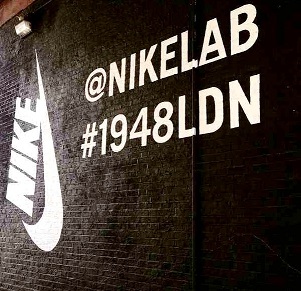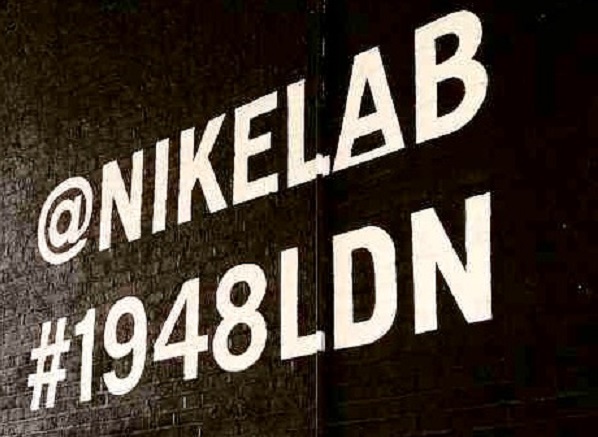Hannah Blacklock reviews the use of temporary pop-ups by long-lasting, big name brands.
At the Box Park pop-up site in Shoreditch, you will find established brands such Gap, Smashbox and OnePiece scattered between new, yet-to-be established ventures.
Whilst this kind of combination is a far more familiar sight nowadays, big brands utilising the pop-phenomenon as a marketing tool, has been going on for years.
Back in 2009, Nike popped-up under an East London railway arch and invited the public to take a step back in time – to 1948. The pop-up was designed as a platform for the brand to sell and showcase Nike Sportswear collections and exclusive limited edition releases.
The venue was designed by London based creative studio, The Wilson Brothers. They recycled more than 15,000 trainers to mark out routes for local runners and create the ‘Nike Grind’ rubber floor. This space allowed shoppers to go in and interact with the staff, ask questions, and chat about their favourite, or least favourite, shoes – all in all, a properly personalised experience.

The NikeLab, as it is now called, is no longer a pop-up time machine; it is a certified part of East London’s street furniture. After the initial success of the pop-up, Nike decided that this Shoreditch spot was the perfect place to house one of their NikeLabs. There are only six of these worldwide.
Whilst solely a Nike venue, the ever-changing space ‘pops-up’ with different, unique offerings every week. On ‘drop days’ the Lab’s innovation is regularly rewarded lengthy queues of trendy East Londoners.
The NikeLab ethos of using and supporting local companies, one of the reasonms for its success. Nike is a big brand, with a big cult backing. When a company of this stature takes the time to focus on and support local communities, as it has done in East London, it is almost certain to be rewarded with loyal, regular custom.
The trainer scene in East London is big business. The NikeLab offers this specific, in-the-know community, exclusive launches and limited edition releases right on their doorstep. In doing so, after testing the water with a pop-up showroom, Nike have cemented themselves as the first port of call for sneaker heads London-wide; and this, in turn, only enhances the global status of the brand.
Nike is just one trademark that has adapted the pop-up format to reach their target audience in a different way.
Only last year Surfdome, the largest online lifestyle retailer in Europe, hosted a pop-up in Old Street. Offering yoga classes and intimate gigs, filling the shop with surfing goods and lifestyle accessories – the idea was to get London excited about the summer season.
As a result of the pop-up, Surfdome received major publicity and news coverage, and sold out all their events. After the pop-up, the Surfdome website experienced a higher hit rate and less bounce – more people were coming online, staying longer and buying more stuff.
East London sees new pop-up ventures arriving every day. Big brands know the marketing power of this short-term, cost effective format and the mass audience they can reach. Pop-ups maximise exposure and make an impact in a short timescale, giving the brand the opportunity to interact with their customers on an inter-personal level.
From a corporate marketing point of view, what’s not to like?

